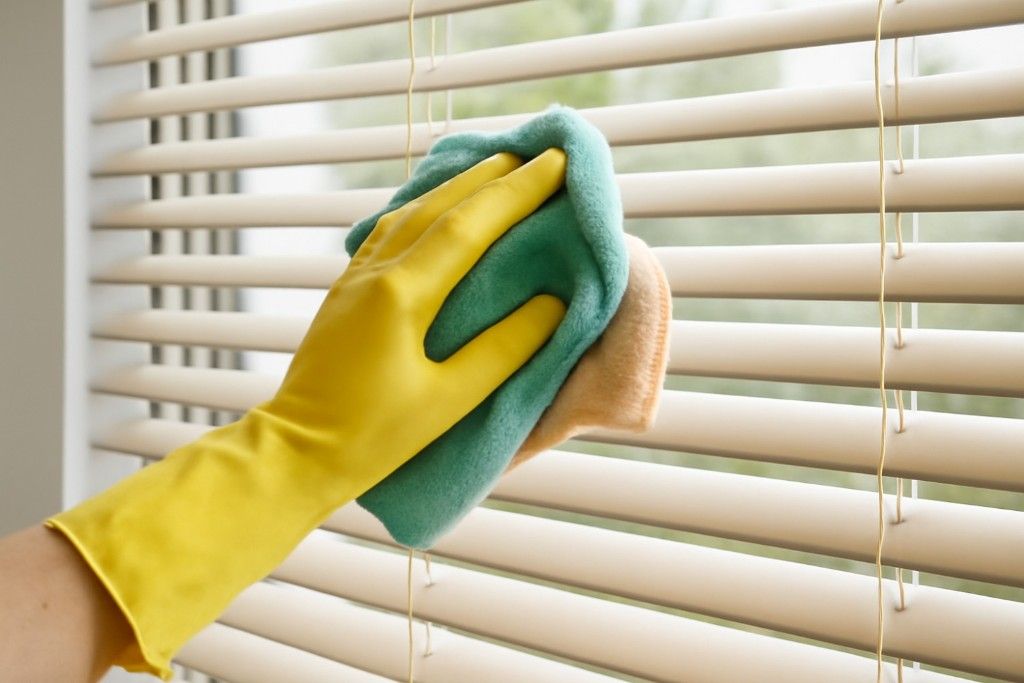Cleaning blinds can often feel like a daunting task, especially when the idea of removing and re-installing them seems too time-consuming. However, keeping your blinds spotless is essential for maintaining a clean and fresh look in any room. Thankfully, there are several techniques you can use to clean your blinds without having to take them down.
These methods range from simple dusting to deep cleaning solutions, all of which can be done efficiently with just a few basic tools. This guide will explore various approaches that will save you time and effort, helping you achieve pristine blinds without the hassle.
1. Use a Microfiber Cloth

Microfiber cloths are one of the best tools for cleaning blinds without removal. Their fine fibers trap dust and dirt, preventing it from spreading or being pushed around. Simply wrap the cloth around a pair of tongs and gently wipe each slat from top to bottom. This method is highly effective for regular dusting and works well for both vertical and horizontal blinds.
For tougher grime, slightly dampen the cloth with water or a mild cleaning solution. Microfiber is gentle enough to avoid scratching your blinds, making it an ideal option for delicate materials like wood or faux wood. The material is durable and reusable, making it an eco-friendly choice.
2. Vacuum with a Brush Attachment
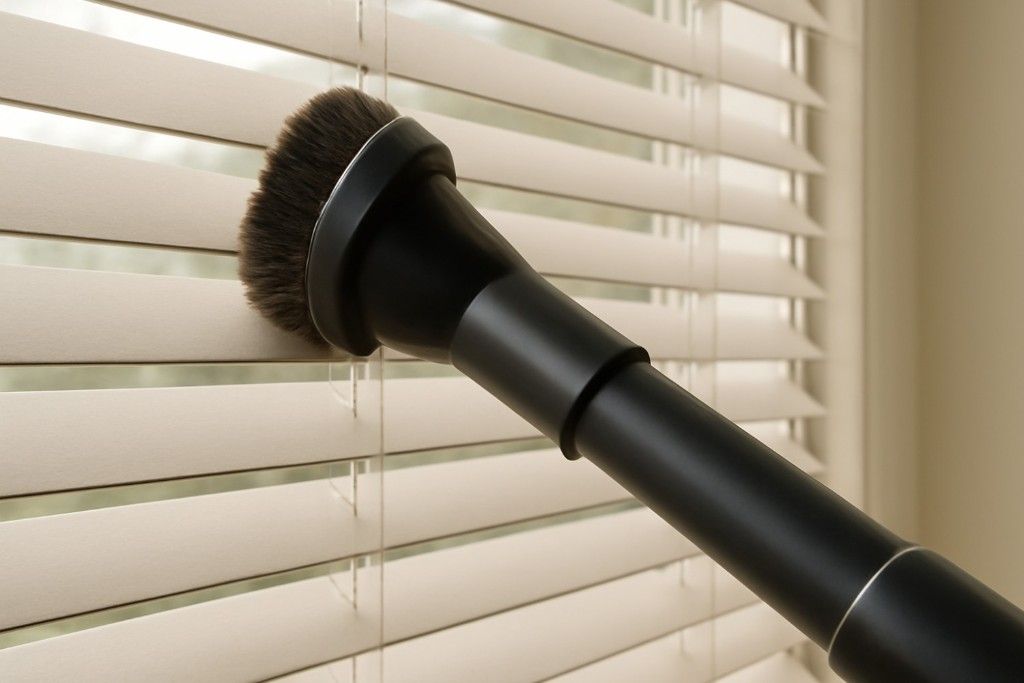
Using a vacuum cleaner with a brush attachment is a quick and efficient way to remove dust and dirt from blinds. The soft bristles of the brush help to lift dust from each slat without causing damage. Start at the top of the blinds and work your way down, gently running the brush attachment along the slats.
This method works best for dust and light debris, and it’s especially useful for Venetian blinds or any blinds with a smooth surface. For best results, clean the vacuum filter regularly to avoid spreading dust back onto your blinds. It’s a great solution for regular maintenance without much hassle.
3. Use a Blinds Duster

Blinds dusters are specialized tools designed specifically for cleaning blinds. They feature soft, flexible arms that can conform to the shape of each slat, ensuring thorough cleaning. Most blinds dusters are designed to handle both horizontal and vertical blinds, and they can be used dry or slightly dampened.
Some models also come with extendable handles, making them perfect for reaching high-up blinds without needing a ladder. Blinds dusters are an excellent choice for routine maintenance and can make dusting much quicker and more efficient. They’re perfect for quickly removing light dust without the need for complex tools, saving you time on regular cleaning.
4. Make Your Own Cleaning Solution
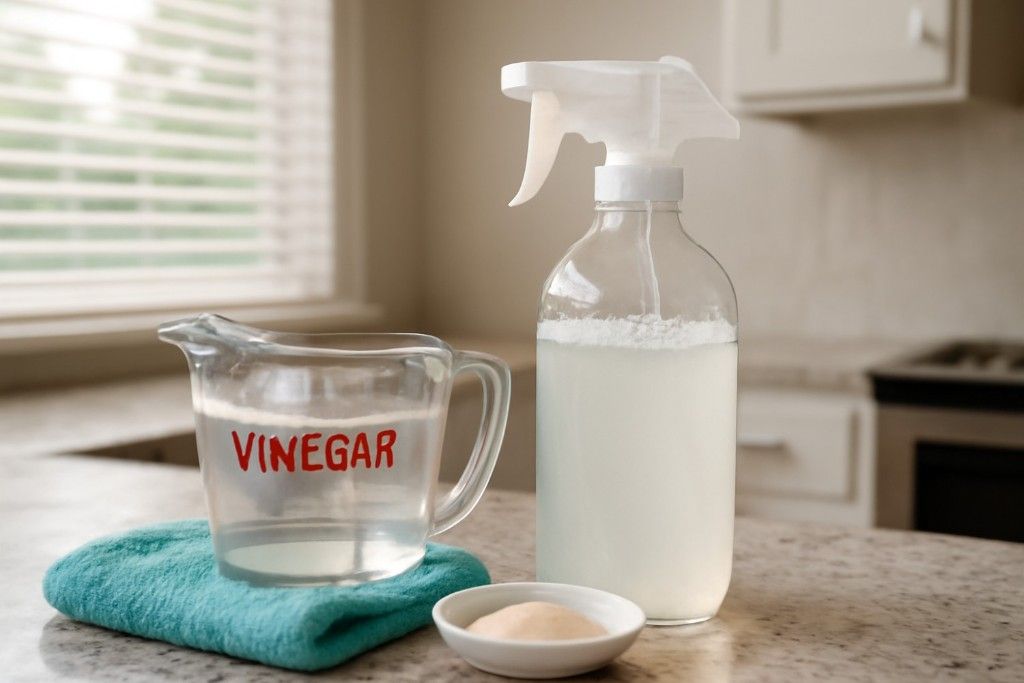
For those who prefer natural cleaning products, making your own solution is simple and effective. Combine equal parts of water and white vinegar in a spray bottle, adding a small amount of dish soap if desired. This solution helps cut through grease, dirt, and dust while being gentle on most blinds. Lightly spray the mixture on a microfiber cloth and wipe down each slat, taking care not to saturate the blinds.
For stubborn spots, a mixture of baking soda and water can also be applied directly to the stain before wiping. Homemade solutions are cost-effective, environmentally friendly, and free from harsh chemicals, making them ideal for frequent use.
5. Use a Sock for Dusting

An old, clean sock can be repurposed as an effective blind cleaner. Simply slip your hand into the sock, and use it to wipe each slat in a downward motion. The fabric is soft enough to trap dust, yet sturdy enough to cover a wide area. To make the process even more efficient, dampen the sock with a mixture of water and mild soap.
Using a sock is an eco-friendly alternative to disposable cleaning cloths, and it’s a great way to make use of old socks that might otherwise be discarded. It’s a quick and easy solution for maintaining blinds between deep cleaning sessions.
6. Try Compressed Air for Hard-to-Reach Areas
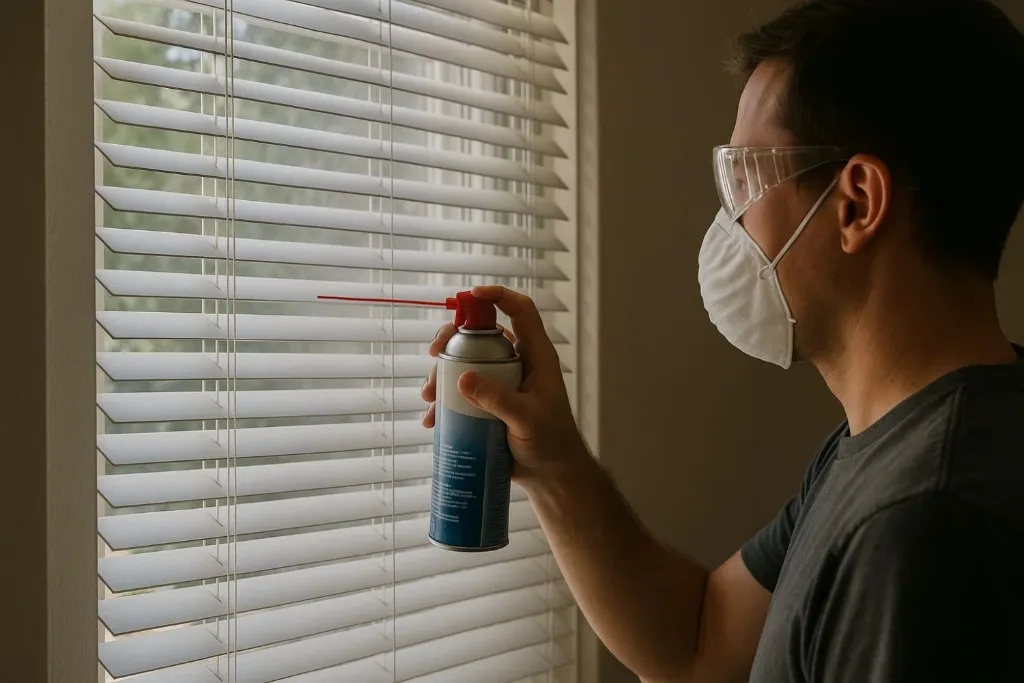
Compressed air is an excellent solution for cleaning hard-to-reach areas, such as between slats or near window corners. A can of compressed air can blow out dust and debris from places that would otherwise be difficult to clean. Simply hold the can at a slight angle and spray between the slats to dislodge dust.
This method is particularly useful for blinds that are not excessively dirty but require light maintenance. Be sure to wear protective goggles and a mask if you’re cleaning in a dusty environment to avoid inhaling particles. It’s a fast, effective, and non-messy method to keep your blinds looking fresh.
7. Use Baby Wipes for Quick Dusting
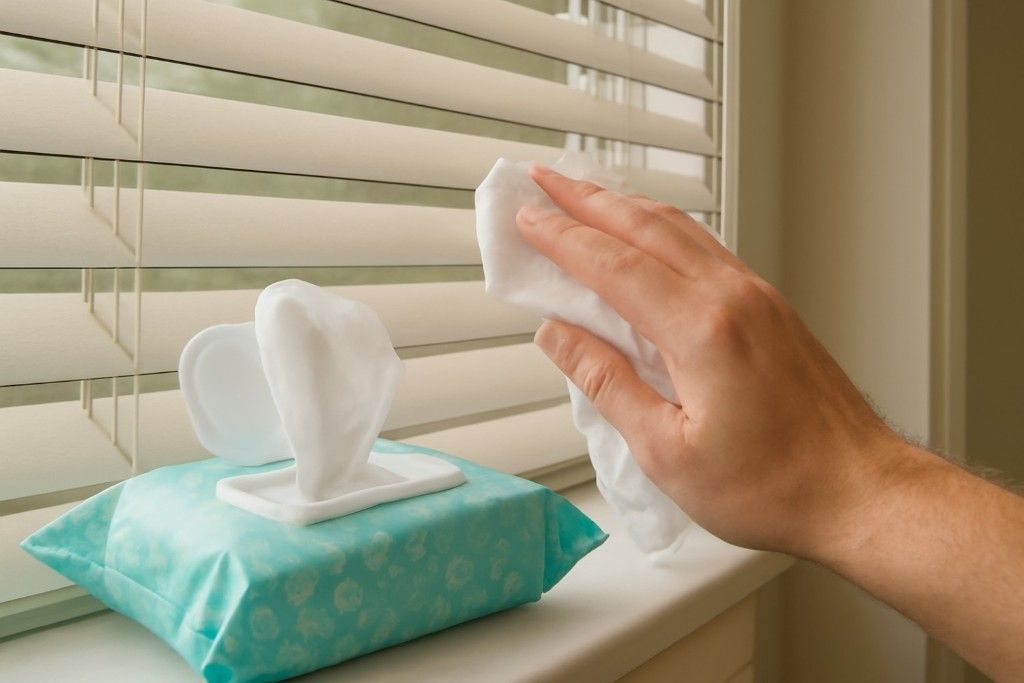
Baby wipes are an excellent solution for a quick and easy dusting of blinds. They’re pre-moistened and gentle, making them safe for a variety of blind materials. Simply wipe each slat with a baby wipe, working from top to bottom. Baby wipes are especially useful for removing fingerprints or light grease spots.
They are a great option for when you need to do a fast clean before guests arrive or for light maintenance between deep cleanings. Baby wipes are also convenient and portable, so you can quickly clean blinds without needing to prepare a cleaning solution or other equipment.
8. Clean with a Steam Cleaner
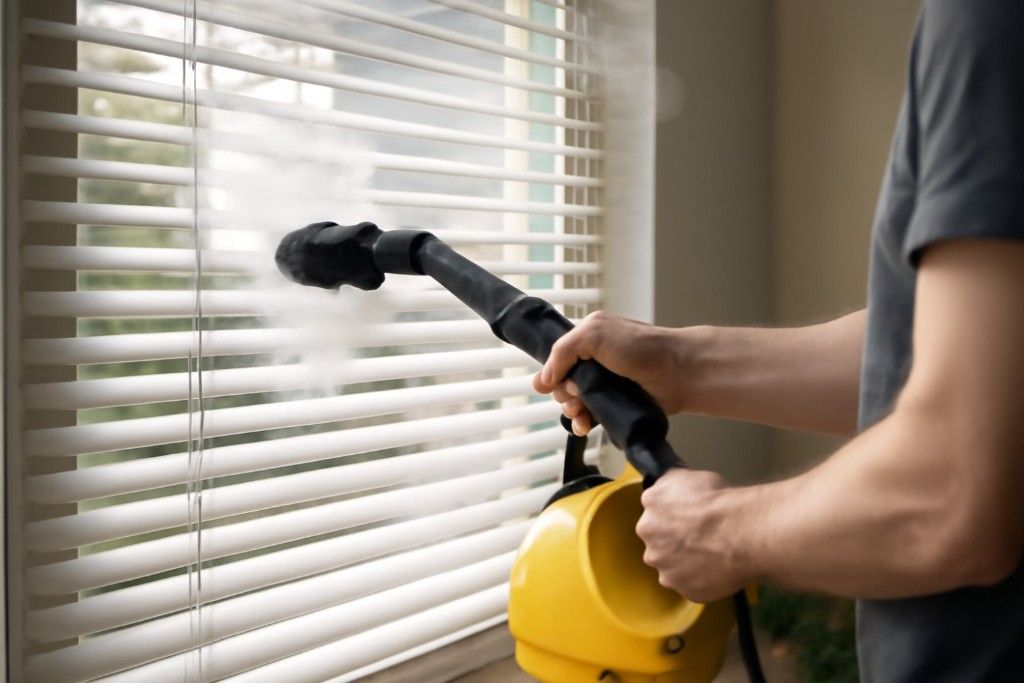
A steam cleaner is an excellent tool for sanitizing and deep cleaning blinds without removal. The high heat from the steam helps to break down dirt, grease, and stains, while also killing bacteria. To clean with a steam cleaner, attach the appropriate nozzle and run it along each slat.
Be cautious not to get the blinds too wet, as excess moisture could cause damage, particularly on wooden blinds. Steam cleaning is ideal for vinyl, aluminum, or plastic blinds, but should be used cautiously on materials like fabric or wood. This method is great for those looking for a thorough, chemical-free clean.
9. Wipe with a Soft Brush
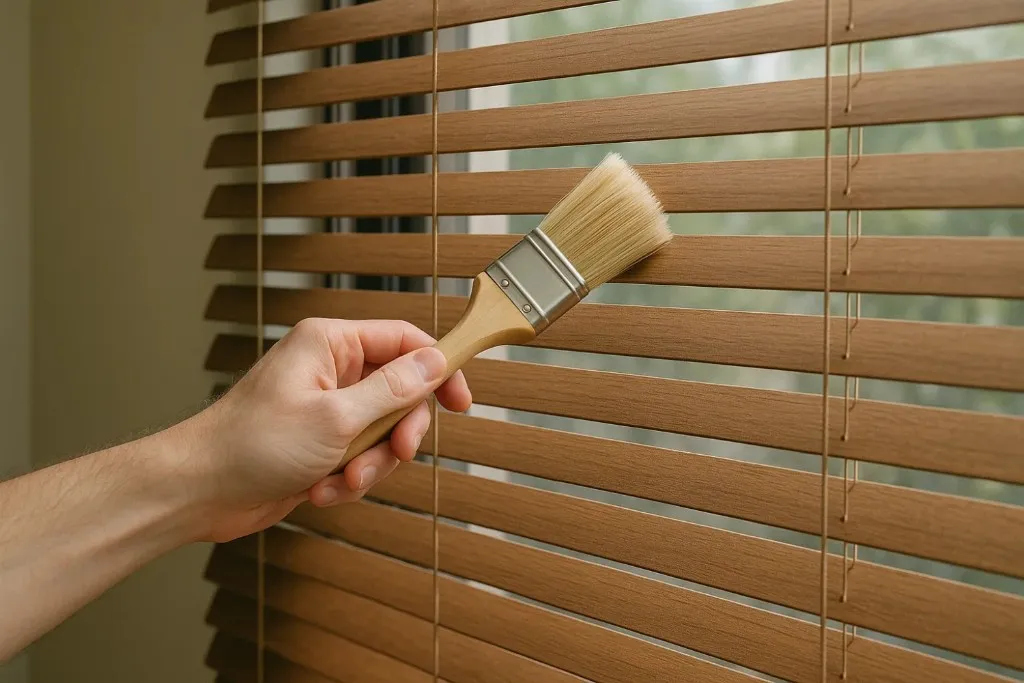
For an easy way to remove dust and dirt from blinds, try using a soft brush, such as a paintbrush or upholstery brush. The bristles of the brush are gentle enough to avoid scratching but firm enough to dislodge dirt from the blinds. Simply run the brush along each slat in a downward motion, working from top to bottom.
This technique is particularly useful for wood blinds, as it helps prevent moisture damage while still removing dirt effectively. It’s a perfect solution for light dusting between more thorough cleans. Soft brushes are affordable and versatile, making them ideal for regular maintenance.
10. Use a Sponge for a Deeper Clean
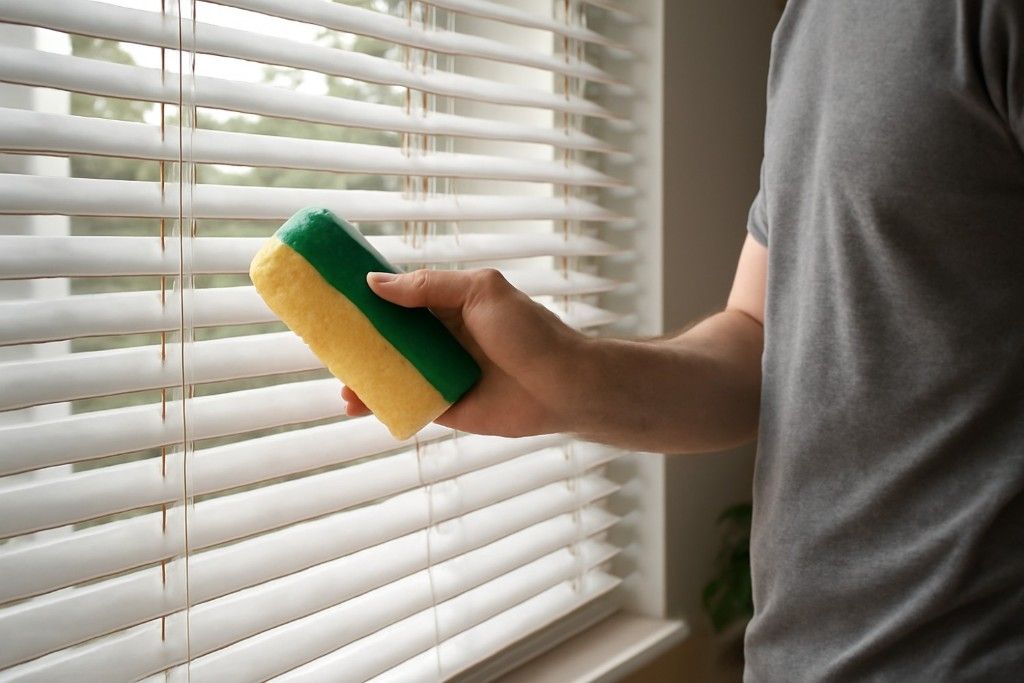
A damp sponge can be an excellent tool for cleaning more stubborn grime on your blinds. The sponge’s porous surface absorbs water and cleaning solution, allowing you to wipe away dirt without leaving streaks. Use a soft, non-abrasive sponge and apply a mild cleaner or soapy water to it.
Gently wipe each slat from top to bottom, ensuring you don’t oversaturate the blinds. Sponges are ideal for cleaning fabric or vinyl blinds, but should be used sparingly on wood blinds to avoid damaging the finish. For tough stains, the sponge can be used with a bit more pressure for effective cleaning.
11. Opt for a Blind Cleaning Tool with Extendable Reach
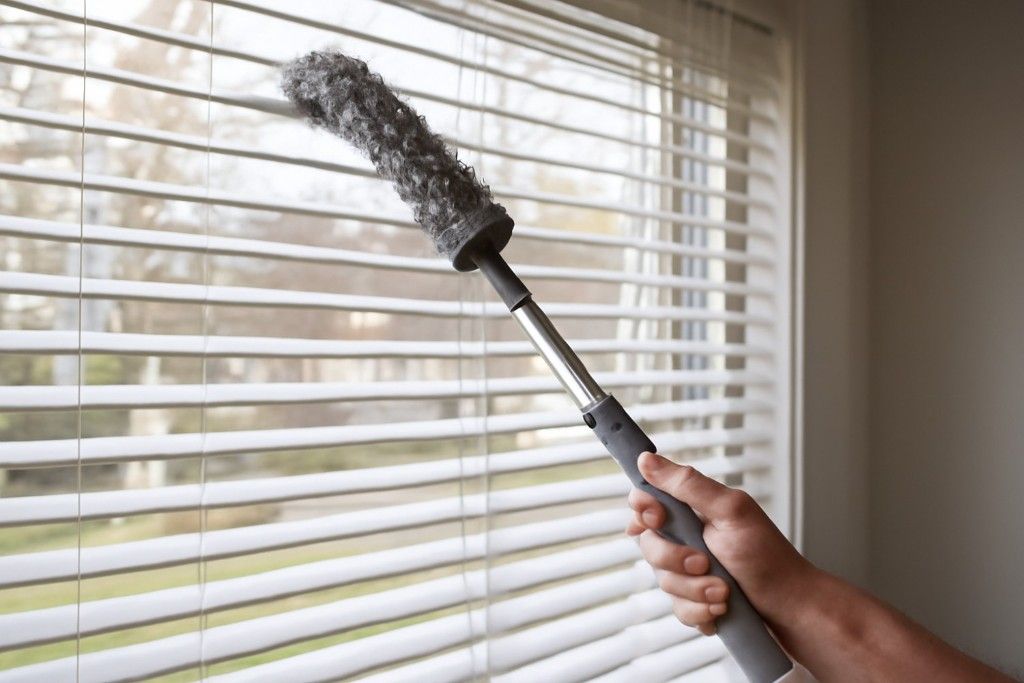
For those who need to clean blinds in high or hard-to-reach places, an extendable blind cleaning tool is invaluable. These tools often come with a flexible, microfiber head that can be adjusted to different angles, allowing you to clean blinds without the need for a ladder. Some models also include a telescoping handle, making it easier to clean tall windows.
These tools are perfect for larger windows or when you want to avoid the hassle of constantly moving a step stool around. The extended reach helps you clean blinds in higher areas more efficiently, making it a must-have for difficult-to-reach spots.
12. Regularly Rotate Blinds to Prevent Build-Up
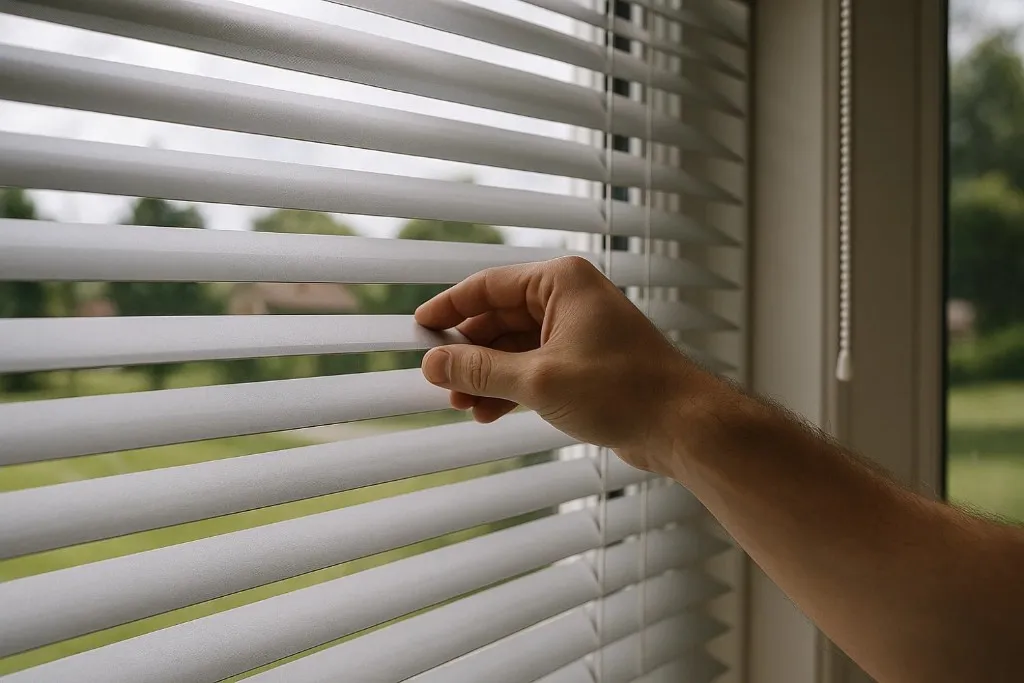
An effective way to prevent dirt and grime from accumulating on your blinds is by rotating them regularly. By periodically changing the position of your blinds, you reduce the likelihood of dust settling in one area, which can make cleaning much more difficult. Regular rotation also helps to maintain the finish of the blinds, particularly for wood or fabric blinds.
This maintenance step, when paired with periodic cleaning, will help keep your blinds in excellent condition and prolong their lifespan. Rotating blinds is a simple yet effective habit to incorporate into your routine, ensuring a cleaner look over time.
13. Avoid Harsh Chemicals
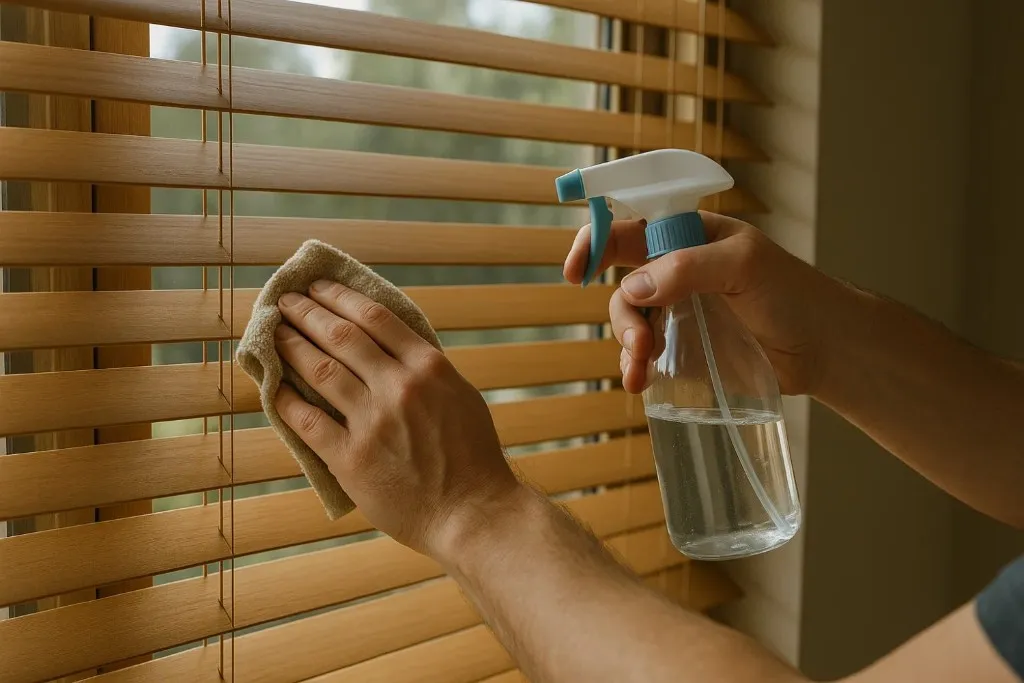
When cleaning blinds, it’s important to avoid using harsh chemicals that can damage the material. Strong cleaners or abrasive substances can scratch, discolor, or even warp the slats. Stick to mild, non-abrasive cleaners or natural solutions like vinegar and water, which are both effective and gentle.
For wooden blinds, always ensure you’re using a cleaner that’s safe for wood to avoid drying out or damaging the finish. By using gentle cleaning methods, you can maintain the integrity and appearance of your blinds for years to come. Avoiding strong chemicals is also better for your health and the environment.
14. Use a Dampened Dryer Sheet
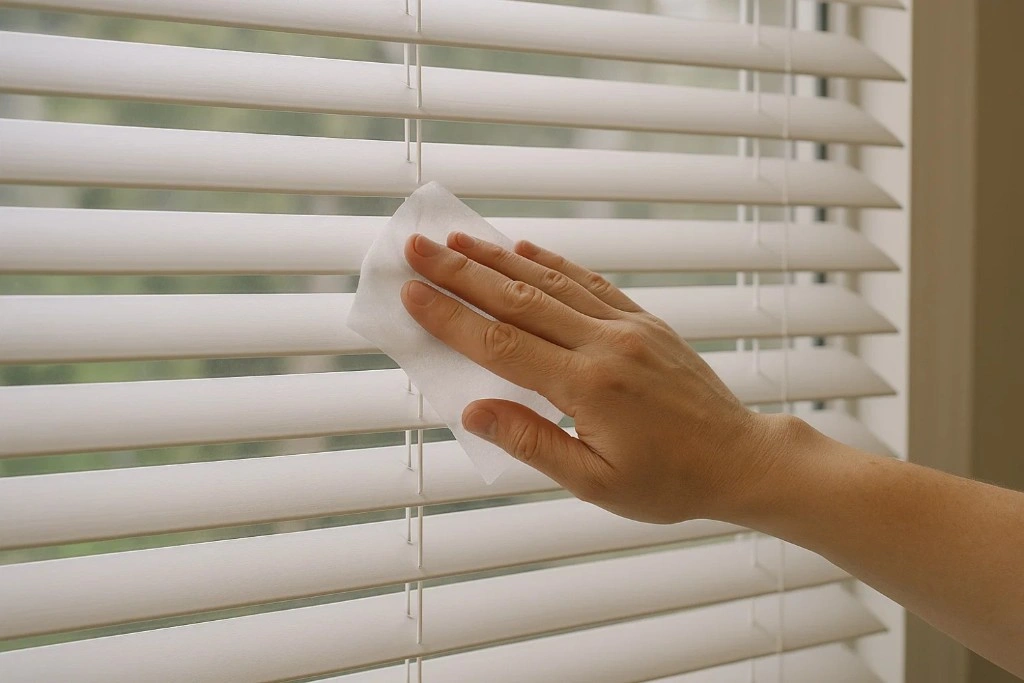
Dryer sheets are not only great for softening laundry but also for removing dust from blinds. The static properties of dryer sheets help to attract dust and dirt, making it easy to wipe down each slat. Simply run a dryer sheet along each blind, making sure to cover all surfaces.
For a deeper clean, lightly dampen the dryer sheet with water or a mild cleaning solution. This method not only helps remove dust but can also leave your blinds with a fresh, pleasant scent. Dryer sheets are especially effective for removing light dust and fingerprints between deep cleanings.
15. Clean Frequently to Maintain Freshness
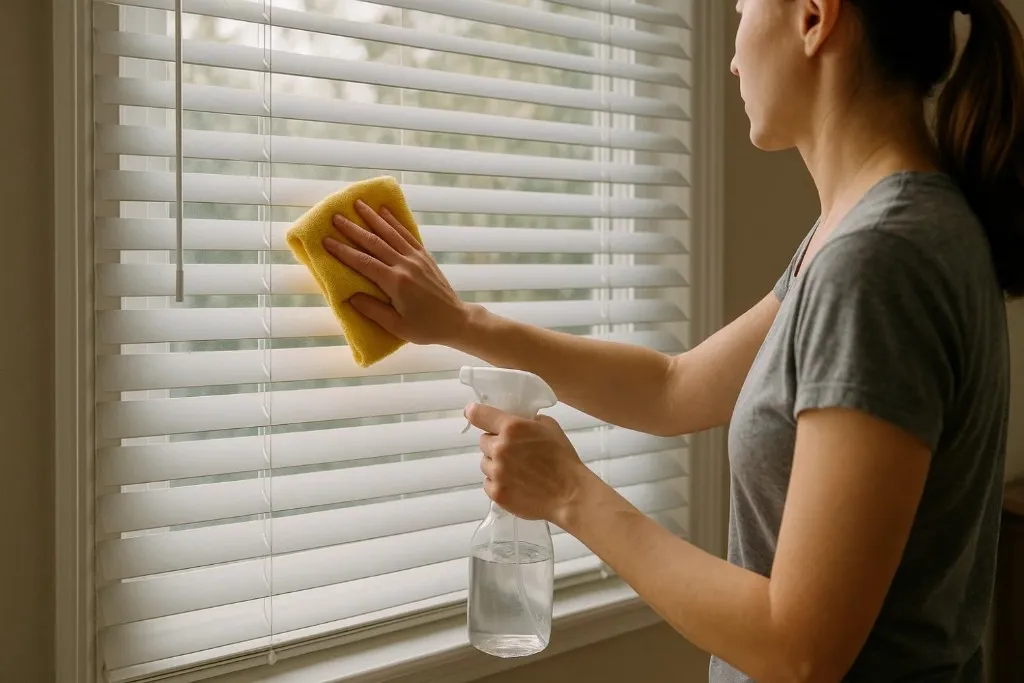
The key to keeping blinds looking their best is regular cleaning. Dust can quickly accumulate, and when left unchecked, it can lead to discoloration and even mold growth, especially in humid areas. Plan to clean your blinds every few weeks, depending on the amount of dust in your environment.
Regular maintenance helps to prevent a build-up of dirt, making each cleaning session easier and quicker. By making cleaning blinds a routine part of your household chores, you’ll enjoy fresh, spotless blinds without the hassle of taking them down. Frequent cleaning is essential to preserve both appearance and function.

